You cannot have a prairie garden without including gray-headed coneflower (
Ratibida pinnata). A staple in Midwest prairies, this tall, upright perennial is a reliable and carefree plant that thrives in most locations in full sun.
The dangling yellow flower heads flutter in the wind and resemble sprays of fireworks that light up the summer garden. These bright flowers also lure bees and butterflies, tempting pollinators with both pollen and nectar. Combine gray-headed coneflower with your favorite purple, blue or violet prairie plants to create a pleasing color combination in your perennial garden, informal naturalized planting or prairie garden. Gather seeds in fall and plant in fall or winter for flowers in summer.
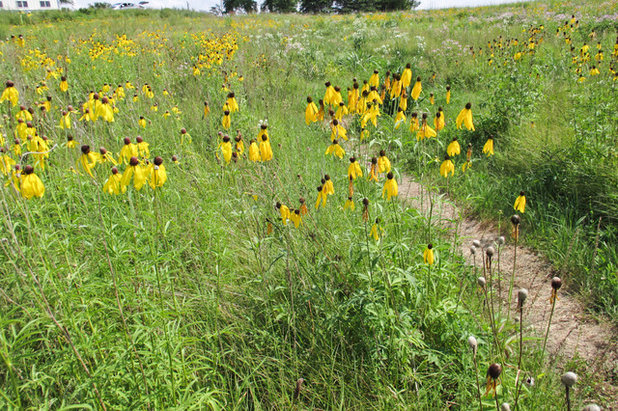
Holm Design & Consulting LLC
Botanical name: Ratibida pinnata Common names: Gray-headed coneflower, yellow coneflower
Origin: The western portion of its range includes the east edge of South Dakota, Nebraska, Kansas and Oklahoma; also occurs throughout Ontario and the eastern United States, except for Maine, New Hampshire, Maryland, Virginia and North Carolina
Where it will grow: Hardy to -35 degrees Fahrenheit (USDA zones 3b to 8b; find your zone)
Typical plant communities: Prairies, meadows, savannas and woodland edges
Soil requirement: Wet-mesic to dry, sandy to clay-loam soil
Light requirement: Full sun
Mature size: 3 to 6 feet tall and 1 foot to 2½ feet wide
Shown: Ratibida pinnata growing in a prairie remnant in southern Minnesota
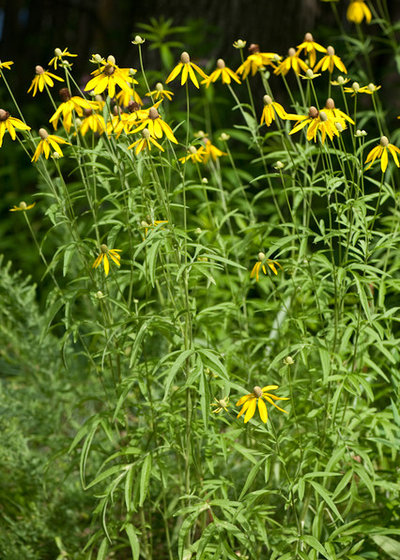
Holm Design & Consulting LLC
Benefits and tolerances: Tolerates most soil types except extremely wet, clay soil
Seasonal interest: Tall flower stalks, upright form and yellow flowers from mid-June through September; interesting oval, brown seed heads persist into the early winter
When to plant: Spring or fall; seeds and plants are available from most native plant nurseries in the Midwest and Northeast
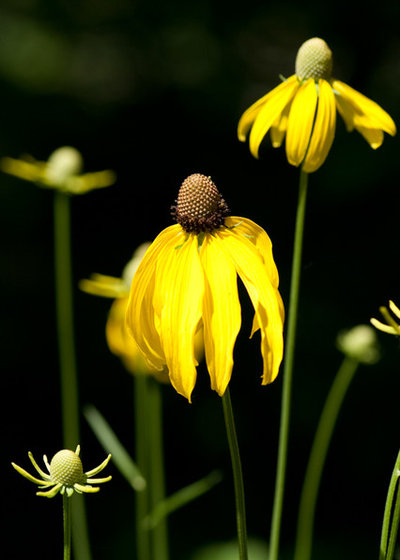
Holm Design & Consulting LLC
Distinguishing traits. The clusters of yellow flowers have long ray florets that dangle downward from the central cone and flutter in the slightest breeze. The flower clusters are showy and bold, and will light up any perennial garden in full sun.
The finely cut, pinnately divided foliage gives the plant a soft, airy texture, and the upright, sturdy flower stalks rarely require staking. Avoid unwanted flopping of the flower stalks by planting this tall native perennial away from walkways or high-traffic areas; make sure the plants are intermixed with other prairie plants of similar height that will provide some support.
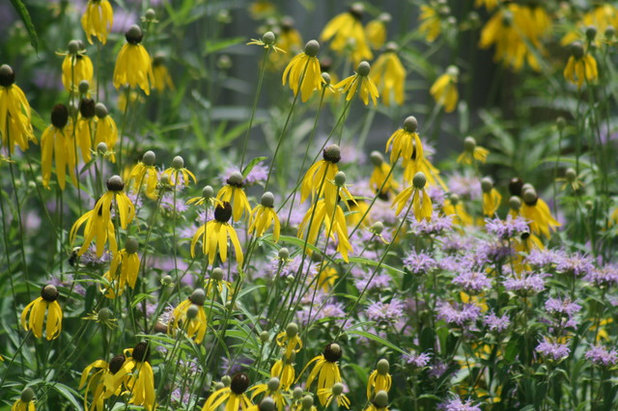
Benjamin Vogt / Monarch Gardens
How to use it. The upright, narrow stature and drooping yellow ray florets are best highlighted massed in the central area of a garden. Surround this plant with plants of equal height, including prairie grasses such as little bluestem (
Schizachyrium scoparium) or big bluestem (
Andropogon gerardii). Use this native perennial in a perennial border, an informal prairie or a naturalized planting in full sun.
Gray-headed coneflower grows well with other flowering prairie plants that prefer average, well-drained soil, such as anise hyssop (
Agastache foeniculum), rattlesnake master (
Eryngium yuccifolium) and wild bergamot (
Monarda fistulosa, shown here).
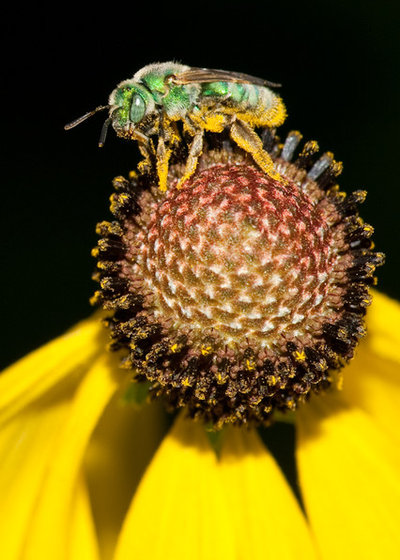
Holm Design & Consulting LLC
Planting notes. Gray-headed coneflower is very adaptable and can grow and thrive in most soil types. In dry, sandy soils, this plant may wilt during periods of drought. It is intolerant of shade, requiring full sun to thrive and flower. I have not seen any browsing of seedlings or mature plants by deer or rabbits (but anything is possible when herbivores are hungry).
This native perennial grows easily from seed. Gather seeds in early fall once the oval seed heads turn brown and crumble with a slight amount of pressing between the fingers. Broadcast immediately in open prepared soil or sow in late winter in a desired location. If you prefer to grow plants indoors in early spring, the seeds require at least 30 days of cold, moist stratification. This can be achieved by mixing the collected seeds with damp sand in a plastic bag and placing the bag in the fridge prior to sowing.
Shown: A female green sweat bee (
Agapostemon sp) collecting pollen
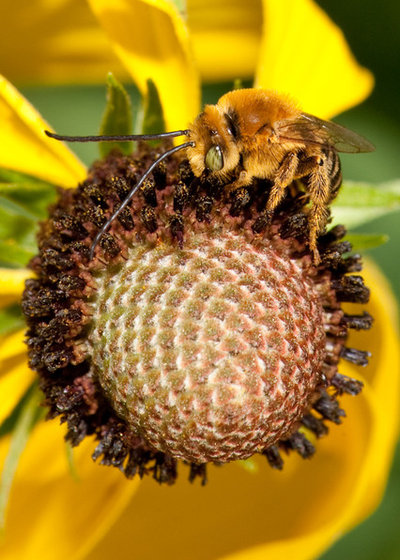
Holm Design & Consulting LLC
Pollinator notes. The brown central cone is comprised of many disk florets that begin developing from the bottom of the cone and then open upward. Pollen is first produced in each developing disk floret; the florets become receptive to pollen after this initial male phase.
Bees, including sweat, long-horned and leafcutter and bumblebees, regularly feed on the flowers’ nectar; female bees collect pollen. It’s fun to watch bees collect or feed on gray-headed coneflower’s floral resources, because they circle around the cone on each flower several times.
Other pollinators include small butterfly and skipper species, such as summer azures and Peck’s skippers. Day-flying moths also probe the disk florets for nectar. Syrphid flies visit the flowers for pollen.
Shown: A male long-horned bee (
Melissodes sp) feeding on nectar
More:Browse plants native to other regions of the U.S.
12 Entertaining ‘Bee-haviors’ of Native Bees





